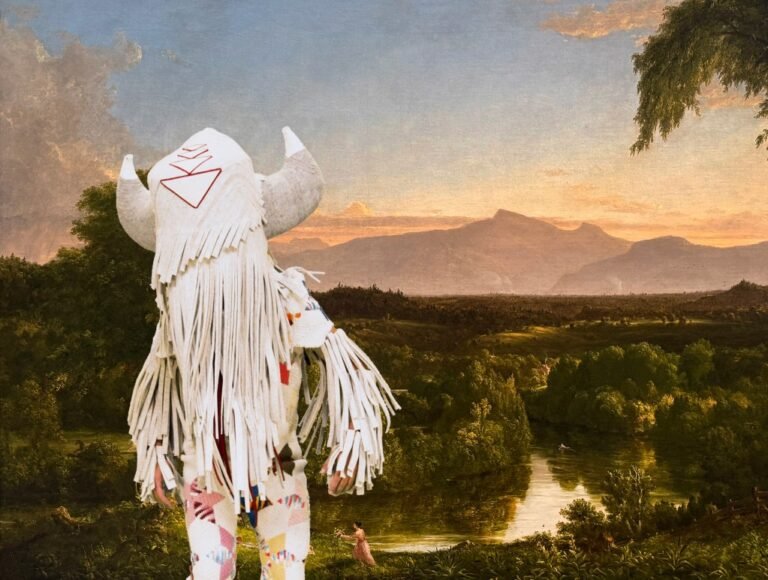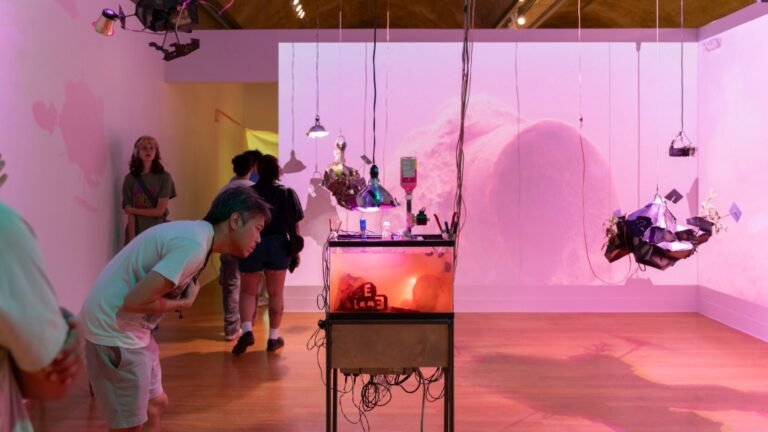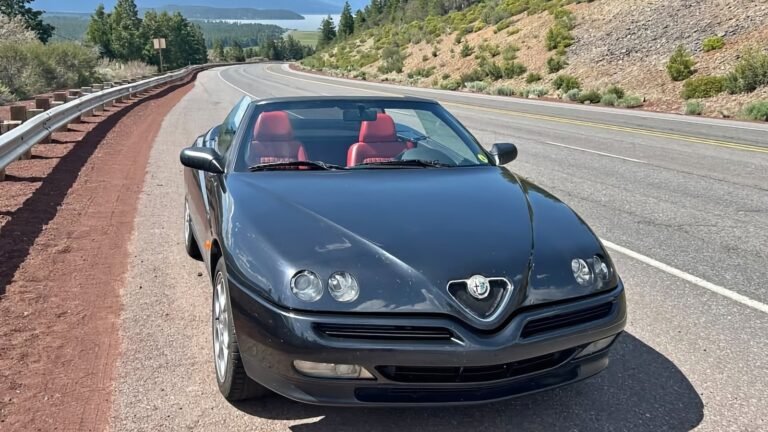

SAN ANTONIO — Jody Folwell made major waves at the 1975 Indian Market in Santa Fe, New Mexico. The artist’s first ceramic submission, “Half a Step” (1975), represented a giant leap away from Pueblo tradition. Though it was executed in a standard shape with a highly polished top and bottom, Folwell “had to go against the grain,” as she recalled in the exhibition catalog, by adorning the piece’s midsection with a running buffalo motif sculpted in relief. The event’s judges hadn’t seen anything like it in the market’s 50-plus-year history, and debated whether the groundbreaking vessel even qualified as Pueblo pottery.
Innovation prevailed, and Folwell won a Museum of New Mexico Foundation Purchase Award for her submission. This episode marked the beginning of her trailblazing career, where taking “half a step” from her heritage has allowed her ample room for expression and experimentation. O’ Powa O’ Meng: The Art and Legacy of Jody Folwell at the McNay Art Museum presents 26 works spanning more than half a century.

Folwell lives and works in Kha’p’o Owingeh (Santa Clara Pueblo), the Tewa-speaking village in northern New Mexico where she was born in 1942. She learned to make pottery from her mother and great-grandmother, using those vessels for carrying water, cooking, storing food, and other operations of daily life. Pottery was also an important source of income for her family.
But being a potter also carries profound meaning in the Tewa culture. In a documentary film screening in the exhibition space, Folwell’s sister, scholar Tessie Naranjo, notes that the Tewa language uses the same word for “earth” and “us.” She explains that this reveals “how deeply we feel about our connection to the Earth.” Describing her process in the same video, Folwell shares that she prays to the Clay Mother while digging her raw materials, asking for insight in the creation of her work.
Though she has always felt deeply rooted in her culture, she began her own ceramics practice in the early 1970s with a desire to find her voice. “When Jody began making pottery, there were only four designs that were commonly used, and deemed acceptable to use, on Kha’p’o Owingeh pottery,” scholar Bruce Bernstein writes in the exhibition catalog. At the time, Pueblo and other Indigenous artists were often pressured by market forces to follow certain aesthetic, technical, and material standards in order to gain regular sales and patronage.

It was risky to move outside of those conventions, but Folwell chose to forge her own path. “With traditional pottery it is so structured, it’s in a box,” she says in the documentary. “You have to climb out of that box to be able to do something else.”
The artist followed the controversial “Half a Step” with other works that broke the mold at subsequent Indian Markets, including “The Hero Pot” (1984), a vessel created with a non-Pueblo collaborator in a green color — a first at the Indian Market — and “Roober Stampede” (1990), featuring motif of a running horse made with a rubber stamp, another first. With later works, such as “Wild West Show” (1996–2003) and “You Don’t Push Bush” (c. 2003), Folwell set her sights on the United States’s fraught history of imperialism, war, and oppression targeting foreign “enemies” and Indigenous groups.
All of these works reflect the artist’s creative ethos, which builds on Pueblo pottery’s history while making searing contemporary social and political commentary that bridges disparate times, cultures, and places. Folwell connects with this sense of continuity on a larger, historic scale — some of her techniques have been used by Pueblo peoples for thousands of years — and on a much more personal level: she has passed her potter’s knowledge to her daughters and granddaughter, whose works are also on display in the exhibition. In fact, in the Tewa language, the exhibition’s title translates to “I came here, I got here, I’m still going.” The phrase perfectly summarizes Folwell’s brave life and work.




O’ Powa O’ Meng: The Art and Legacy of Jody Folwell continues at the McNay Art Museum (6000 North New Braunfels Avenue, San Antonio, Texas) through January 4, 2026. The exhibition was co-organized by the Fralin Museum of Art at the University of Virginia and the Minneapolis Institute of Art, with Lauren Thompson overseeing the McNay iteration. It will travel to the New Mexico Museum of Art in Sante Fe from February 6 to June 21, 2026.






